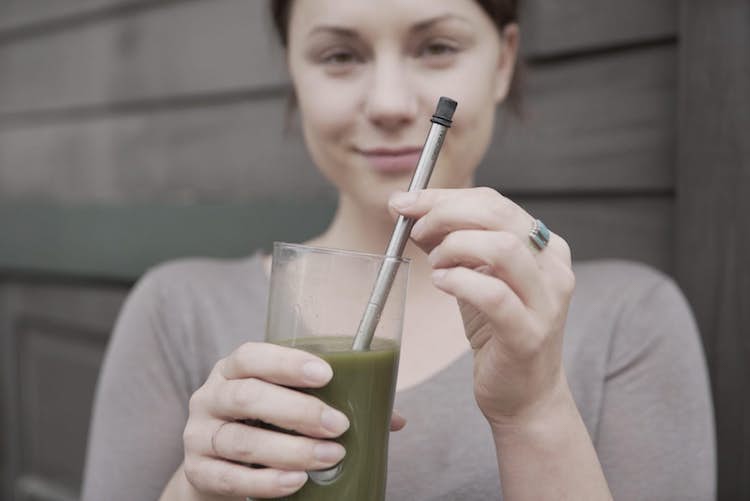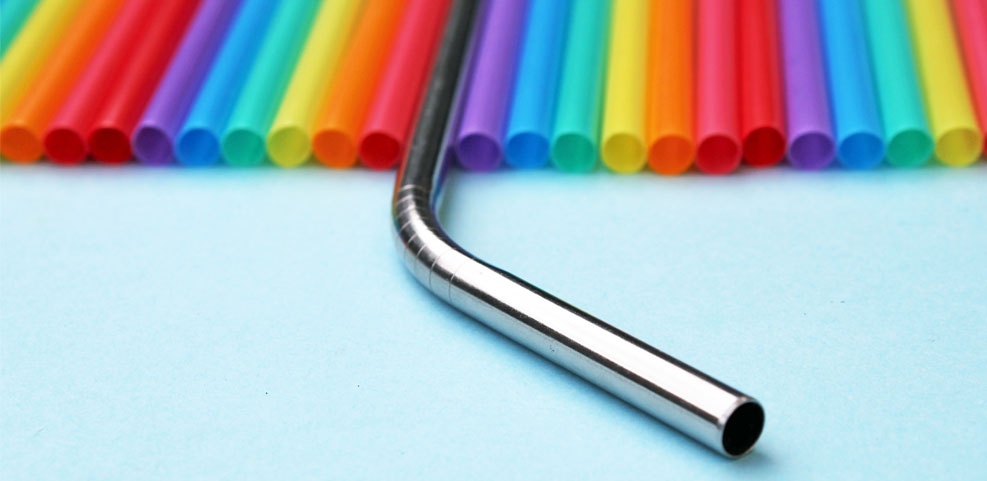Last Updated on June 3, 2024 by Annie Baldwin
With plastic pollution becoming an increasingly pressing issue, many consumers are looking for alternatives to single-use plastic items like straws.
Metal straws have emerged as a popular reusable option, but are they really better for the environment?
Are Metal Straws Environmentally Friendly?

Metal straws are generally more environmentally friendly than single-use plastic straws.
Their durability allows them to be reused extensively, reducing waste.
However, they do have a higher carbon footprint to produce than plastic.
Overall, metal straws are a good sustainable choice if used properly and not discarded after one use.
But not using any straw is the most eco-friendly option when possible.
Key Points
- Metal straws are reusable and durable, generating far less waste than single-use plastic straws
- They have a higher carbon footprint to produce than plastic, but less emissions over their lifecycle
- Metal straws reduce plastic pollution and carbon emissions from plastic production and disposal
Our Opinion
In our view, metal straws are a smart sustainable swap for plastic straws.
While no straw is the greenest choice, reusable options like metal and glass are far better for the planet than continuing to use single-use plastics.
We think metal straws are a simple way individuals can make an eco-conscious choice in their daily lives.
Their durability also makes them a worthwhile investment. With proper care, metal straws can be reused for years to come.
Are Metal Straws Better for the Environment?

When used properly, metal straws can be a more eco-friendly choice than plastic. Stainless steel and other metal straws are durable and long-lasting. Since they can be used over and over again, they generate less waste compared to disposable plastic straws.
Metal straws are also free of BPA and other chemicals that can leach from plastic. This makes them a safer choice for your health. When thrown away, steel straws won’t end up polluting oceans and harming wildlife like plastic straws often do.
However, the environmental impact depends on a few factors. Metal straws tend to be shipped long distances since most are manufactured overseas. This can lead to higher CO2 emissions from transportation. And their heavier weight means more fuel is required to ship them.
Overall, metal straws are a good option for the environment, especially when used properly and reused often. But they may not be suitable for all situations. For true zero waste, reusable glass or bamboo straws shipped from closer locations could be even better alternatives.
What Are the Pros and Cons of Metal vs. Plastic Straws?
When comparing metal and plastic straws, there are pros and cons to consider for both materials:
Metal Straw Pros:
- Reusable and durable – can last for years
- Often made from stainless steel which is stain resistant
- Free of BPA and other chemicals
- Generally more environmentally friendly
Metal Straw Cons:
- Can be expensive upfront
- Heavy to ship long distances
- Can get hot or cold while drinking
- Not convenient for on-the-go use
Plastic Straw Pros:
- Cheap and convenient for one-time use
- Lightweight to transport
- Flexibility prevents injury
- BPA-free options available
Plastic Straw Cons:
- Not reusable or durable
- Can leach chemicals if not BPA-free
- A major contributor to plastic pollution
- Harms wildlife and environment
For the health of our planet, reusable metal straws tend to be the better choice overall. But plastic may still serve a purpose for on-the-go drinks. The best solution is reducing the overall use of both.
How Are Metal Straws Produced and Recycled?

Metal straws are most commonly made from stainless steel or titanium. The production process starts with raw metal that is melted down and formed into tubes of various diameters. These metal tubes are then cut to size, polished, and finished with silicone or plastic tips.
Some key steps in metal straw production include:
- Melting – The raw stainless steel or titanium is melted into a liquid state so it can be formed.
- Extruding – The molten metal is pushed through a die to create long tubes.
- Cutting – Tubes are cut to the appropriate straw length, often around 7-10 inches.
- Polishing – Straws are polished to create a smooth, shiny finish.
- Tip attachment – Plastic or silicone tips are added to the ends.
At the end of life, metal straws can be fully recycled. Stainless steel and titanium have high scrap value and can be remelted and reused indefinitely without loss of quality. Recycling steel and titanium requires much less energy than virgin production.
To recycle, metal straws should be cleaned and dropped off at metal recycling centers. Some metal straw companies also offer take-back programs. Properly recycling metal straws helps create a closed-loop cycle and prevents these durable products from ending up in landfills.
What Is the Carbon Footprint of Metal Straws?
The carbon footprint of metal straws is lower than single-use plastic straws. However, producing metal straws does require more energy and resources than plastic.
Factors that contribute to the carbon footprint of metal straws include:
- Raw material extraction – Mining and processing metal ores like iron and titanium requires energy.
- Manufacturing – Melting and machining metals into straws emits greenhouse gases.
- Transportation – Shipping heavier metal straws increases emissions.
But metal straws compensate through long lifespans and recyclability. While plastic straws are used only once, each metal straw can eliminate hundreds or thousands of plastic straws over its lifespan. At the end of life, metals like stainless steel and titanium are infinitely recyclable without loss of quality.
For consumers aiming to reduce waste, reusable metal straws are a good option. With proper care, each metal straw can significantly cut single-use plastic usage over time. And by recycling metal straws responsibly, their environmental impact can be further minimized.
Are There Greener Alternatives to Metal Straws?

While metal straws are more sustainable than single-use plastic, there are some potentially greener alternatives.
Options like glass and bamboo straws have lower carbon footprints. They require less energy to produce and are lightweight to transport. However, glass can break and bamboo has a shorter lifespan than metal.
Reusable plastic straws made from PLA bioplastic could be a good choice. PLA emits less CO2 and breaks down more easily than conventional plastic. The key is reusing these straws many times before recycling responsibly.
Simply going strawless is another eco-friendly option. With reusable cups and mugs, you may not need a straw at all. This eliminates waste.
There is no universal best option. The greenest choice depends on your habits and how you use straws. Any reusable alternative beats single-use plastic. And with proper care, metal straws can be an excellent plastic-free solution.
FAQ
Why Are Metal Straws Banned?
Metal straws are not actually banned in most places. However, some venues have chosen to ban metal straws due to safety concerns. The hard material of metal straws could potentially cause injury if someone fell while using one.
What Straws Are Best for the Environment?
Reusable straws like metal, glass, or silicone tend to be the most eco-friendly option. They can be used over and over again rather than being tossed out after one use like plastic straws. Metal straws specifically are very durable and long-lasting.
How Long Does It Take for Metal Straws to Decompose?
Metal straws do not biodegrade or decompose. However, they can potentially be recycled. Their durability allows them to be reused extensively before recycling.
How Do Metal Straws Help Climate Change?
By providing a reusable alternative to single-use plastic straws, metal straws reduce plastic waste and carbon emissions associated with the production and disposal of plastics. Widespread use of metal straws could make a small but meaningful impact on reducing greenhouse gases.
Conclusion
Metal straws are generally considered an environmentally friendly alternative to disposable plastic straws. Their durability and reusability mean they generate far less waste. While they have a higher carbon footprint to produce than plastic, their overall lifecycle results in less emissions and waste. Choosing reusable options like metal straws can be a simple way for individuals to reduce their environmental impact. Are metal straws environmentally friendly? Overall, yes – they are a greener choice compared to plastic.
